By Duane Vandenbusche
The Pioneer Ski Area began during the winter of 1939-40 and was located three miles up Cement Creek and eight miles south of Crested Butte on the side of spectacular Cement Mountain. Pioneer would become famous as the first ski area in Colorado to employ a chairlift.
The ski area was hatched in the minds of Gunnison skiers Rial Lake, Art Fordham, Chuck Sweitzer and Wes McDermott. All of these men had skied off Monarch and Marshall Passes in the 1930s, but they yearned for a ski area that could eliminate the long treks to the tops of mountains. The four men knew the region around Crested Butte to the north had everything needed for a great ski area – tremendous snow, high mountains, and a great ski tradition dating back to the early 1880s.
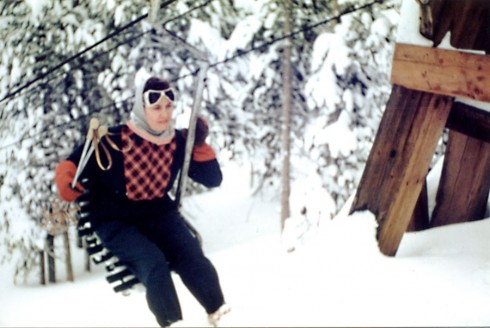
Art Fordham, who had moved to Gunnison from Aspen in 1938, lived for a short time at the Pioneer Resort at the base of Cement Mountain. An avid skier, Fordham found a potentially great area above the resort while on horseback that summer. The Aspenite contacted the Gunnison Valley Ski Club and they obtained a permit for the ski area from the U.S. Forest Service (USFS) for one dollar. Next, the club got help from the New Deal’s WPA which agreed to put 40 men to work on the project.
During the summer of 1939, WPA men and locals cut ski trails on the north side of Cement Mountain. The work, on steep terrain and from 9,000 to 11,000 feet in elevation, was exhausting. Three runs were cut – an advanced slope, 4,000 feet long with a vertical drop of 1,300 feet named the Big Dipper; an intermediate run following the construction road, 8,000 feet long and dropping 1,350 feet called the Little Dipper, and a beginner run of 300 feet named the Milky Way. The chairlift was named Comet.
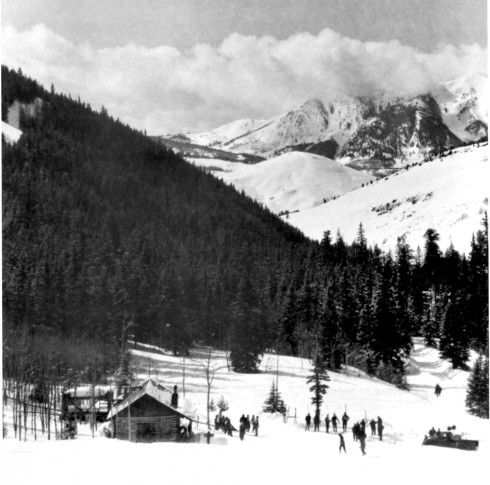
Building the first chairlift in Colorado seemed impossible because it would require an aerial tram to carry the chairs. Gunnison locals knew of an abandoned tram at the Blistered Horn mine near the summit of Cumberland Pass by Taylor Park. The ski club bought the tram for $50 and luckily, an old miner showed members how to get the cable down from the tram towers. The miner placed two sticks of dynamite at the base of each tower, lit the fuses and the towers came down intact. After 11 towers were brought down in this manner, they were loaded onto the back of an old World War I army truck and driven fifty miles to Pioneer. To get the huge towers to their locations along the lift line, a road was built to the top of the ski area and the towers were lowered down the hill by rope and cable.
The cable used to carry the chairs also came from the Blistered Horn and was 6,100 feet long and 1 1/4 inches in diameter. At the bottom of the lift a large Waukesha engine, with a six-gear Brownie transmission and a 400 horsepower motor, powered the chairlift. When the ski lift was completed in the Fall of 1939, the USFS became alarmed because the chairs were twelve feet above the ground; it feared for the safety of the skiers should they fall from that great height. However, when 200 or more inches of snow fell, skiers caught their skis on the snow and were flipped out of their chairs. The USFS then insisted the cable and chairs be raised!
The chairs at Pioneer were made from the harnesses of the huge ore buckets from the Blistering Horn. The buckets were taken off the harnesses and a steel frame holding a wooden seat was welded to the harness – nothing like today’s chairs! The chairlift at Pioneer had 80 chairs.
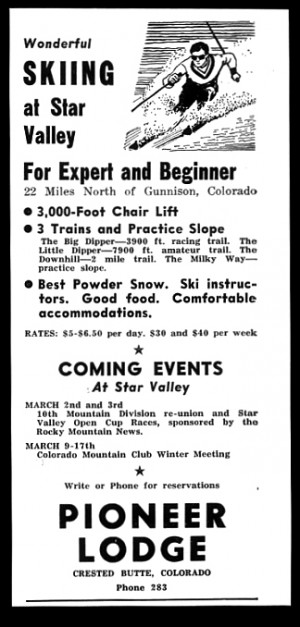 Pioneer, which was also known as Star Valley, opened in December of 1939 and ran from 9:00 a.m. to 4:00 p.m. with club members working the area. Riding the lift cost one dollar a day; a season pass was $30. Some of the nation’s top skiers came to Pioneer, as the Southern Rocky Mountain Ski Association held meets there. Slalom and downhill races were held on the Big Dipper. The waterfall on the lower half of the Big Dipper prompted one competitor to exclaim: “My God, I didn’t bring my parachute!” The run was extremely difficult due to its steepness and fall-away turns.
Pioneer, which was also known as Star Valley, opened in December of 1939 and ran from 9:00 a.m. to 4:00 p.m. with club members working the area. Riding the lift cost one dollar a day; a season pass was $30. Some of the nation’s top skiers came to Pioneer, as the Southern Rocky Mountain Ski Association held meets there. Slalom and downhill races were held on the Big Dipper. The waterfall on the lower half of the Big Dipper prompted one competitor to exclaim: “My God, I didn’t bring my parachute!” The run was extremely difficult due to its steepness and fall-away turns.
Pioneer closed from 1942-46 due to WW II. During the next few years, many changes came. Western State College hosted intercollegiate meets, leading to the installation of a new warming hut at the top of the lift. In addition, a ski jump was built in 1948 but abandoned after a year because it was too dangerous.
By the winter of 1950-51, Pioneer was beginning to show its age. Money was short, the USFS worried about the safety of the lift, and a new area – Rozman Hill – had begun three miles to the north. The winter of 1951-52 was the final season for Pioneer. The chairlift was bought by the fledgling Monarch Ski Area. And so Pioneer passed into history, but its stunningly beautiful scenery, and the honor of having the first chairlift in Colorado, would live on forever. Adieu, Pioneer!
Duane Vandenbusche has been a professor of history at Western State Colorado University since 1962. He is also the author of nine books including “Around Monarch Pass”.
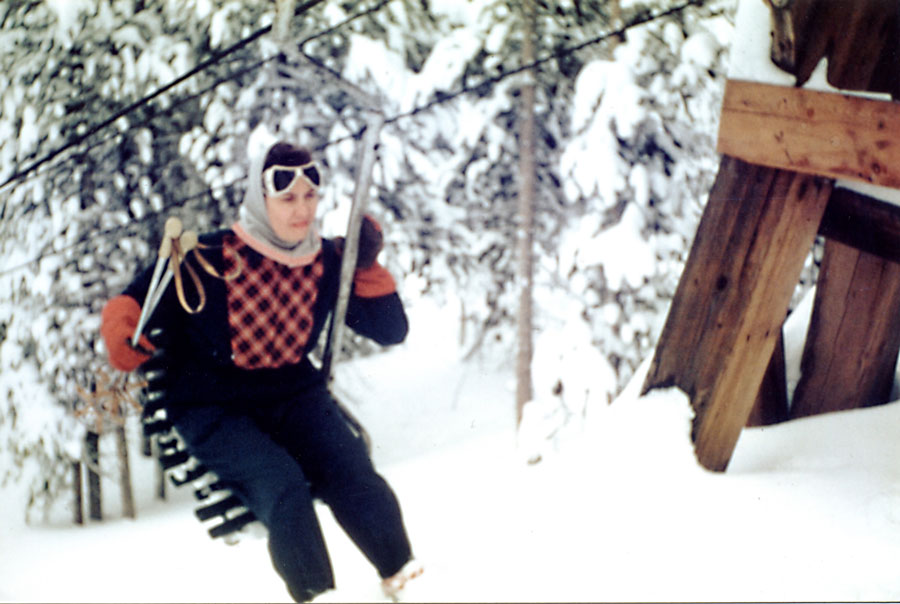
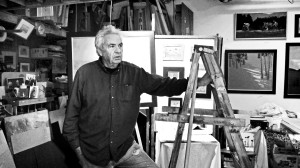
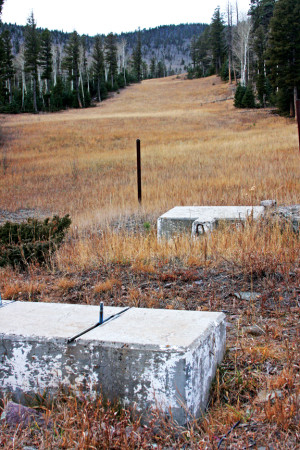
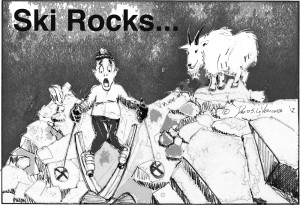
Great story, but its Chuck Sweitzer!
Sorry about that. We’ve fixed it on the web article.
I believe the caption should read that Duane Vandenbusche is been a professor at Western since about 1965.
Yes, it was Chuck Sweitzer. Duane interviewed my father for the story and I am not sure how it got written with these mistakes. The tribute for the picture on the ski life most likely came from the News Champion [edited by Rial Lake]. There is a full documentation of the History of Pioneer Ski Area. Scott LeFevre who lives in CB has a copy. He is a grandson of Rial. Frank Lefevre and his Gunnison friends, along with the College built up Rozman hill for the ski jump. It was only a rope tow build for the jump.
In fact now that I look at the picture, its most likely my sister Roxy LeFevre. It might have been a color picture but most likely a Black and White taken by Rial.
Dr Vandenbusche came to Gunnison in 1962. I took classes from him the first year.